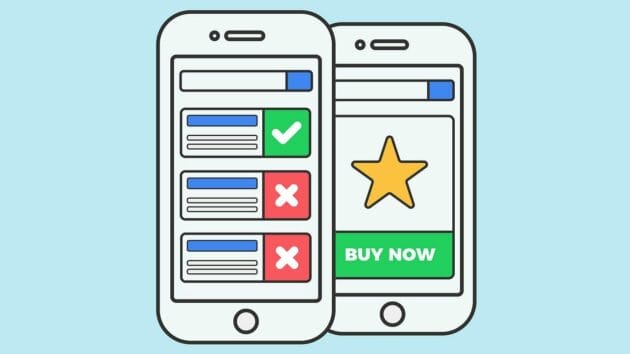The ever-increasing number of internet users offers boundless possibilities for your company to achieve fame and fortune. With each passing day, this unmatched virtual space continues gaining the attention of multitudes of ingenious content generators, brands, and more who plan on showcasing their products and services to audiences worldwide. Thus, budding entrepreneurs like yourself stand an excellent chance of realizing their dreams by becoming part of the vibrant online community.
So, how can you leave a long-lasting impression? With the help of a seamless, design-focused website interface and optimized content. Both will ensure a boost in user engagement. So, for those who may be lost and uncertain about where to get proper guidance, this blog might be what you need.
Web design and content optimization: The two vital factors

Web design and content optimization share an integral relationship. Where web design is essential for aesthetic purposes, content optimization helps draw more traffic to your site, making it more accessible and visible. These two depend on each other, and you need both aspects to be in sync so that they collaborate to hit the jackpot.
A great SEO will help you perform better and improve your ranking, thus making your content more consumable. An impeccable website design will keep all information organized, improving page ranking, and enabling you to secure the top position on the SERPs.
Related: How to Increase User Engagement for Your Mobile App?
How to improve user engagement and what factors affect it?

Now that you know you have to zero in on your web design and content optimization, you can try to improve the following points to boost the performance of your website.
1. Design layout
You should never minimize the importance of a well-designed web page. An aesthetically pleasing, well-structured page will always lure more visitors. High-quality pictures also have the power to leave a lasting impression when it comes to branding. Consumer trust will bolster once they start associating the images with your brand. In fact, they will begin sharing and promoting your website.

Also, minimize using technical jargon so users can understand and relate to your page. Do you know keeping verbosity at bay positively impacts user experience? Search engine web crawlers work well when the content is information-rich, streamlined, direct, and 100% original.
Make sure to have the following crucial points in mind while designing a web layout:
- Keep the design consistent with uniform colors.
- Make the content engaging and cohesive.
- Your layout visuals should be defined correctly.
- Users should feel comfortable upon visiting your site.
2. Website speed
Ideally, your website should take 1 to 3 seconds to load. Studies reveal viewers lose interest and show unsatisfactory responses if there is more than a 4-second delay when it comes to website loading speed. The design and structure of your website will directly influence its responsiveness and loading speed.

You can apply the following tricks to ensure your web page is responsive enough and opens fast:
- Minimize and compress your CSS and JS files.
- Upgrade your site to a better and faster network.
- Improve the web core vitals of the site.
- Use a caching solution.
- Compress your images to a format that will reduce the server load.
- Add relevant title tags, meta descriptions, and keyword-enriched alt tags attached to the pictures to help web crawlers understand the content.
3. Mobile-friendly websites

People love to get information on the go. With the digital world shifting from desktops to mobile phones, the need for websites that work well on mobile devices has become prominent. Many customers use smartphones to access sites. Hence, it makes sense to keep your website mobile friendly. You can achieve this with flexible web graphics and user interfaces that work well on devices with smaller screens.
Here is how you can do it:
- You can use ready-made mobile-optimized templates.
- You can reduce the use of animations and pop-ups.
- You can avoid uploading heavy images.
4. Graspable content

Now, who does not like easily understandable and aesthetically pleasing content? Supplementing your website with appealing visuals will work as a game changer. You can make it attractive by adding high-quality images, animations, and infographics. Your website must grab the attention so that you can boost user engagement. Ensure to incorporate visual designs that speak volumes about your brand and be careful not to upload stock images.
You can also cater to your “hard of hearing” audiences by using transcription to convert your audio files to text (as explained more in the next section of this article). This way you can implement keyword-rich content for web crawlers to easily index your website. If you have YouTube videos, you can make them more appealing by adding captions.
See also: 5 Key Factors that Affect the Engagement of eCommerce Videos.
5. Transcription

“Transcription has revolutionized the way businesses approach content creation, not only for those with hearing disabilities but for everyone else. It converts audio and video content into written form, making your content more inclusive, accessible, and easier to consume.” – as quoted from a recent interview with Mindaugas Caplinskas, a serial entrepreneur as well as the co-founder and CEO of GoTranscript.
For instance, people may prefer reading transcripts when in a noise-sensitive environment. Search engines also favor text-based content, increasing your site’s visibility. Transcription has an indirect positive impact on your SEO, as they enable you to integrate keywords naturally, thereby boosting your SERP ranking.
Moreover, video transcripts offer a better user experience. If your website has video content, transcripts make it searchable and skimmable, enhancing user engagement. Users who prefer reading over watching videos can also grasp the content better.
There are several ways to utilize transcription for your site:
- Podcast transcription: If you have a podcast, transcribing it can increase your reach. People who prefer reading can access the content, and it will be easier for search engines to index it, making it more discoverable.
- Video transcription: As already mentioned, transcriptions make your video content accessible to a larger audience. People with hearing impairments, those in noise-sensitive environments, or those who simply prefer reading can all benefit from this.
- Live event transcription: Transcribing live events like webinars or panel discussions can help you repurpose content, as well as offer it to those who couldn’t attend.
Transcription is a cost-effective method to increase your website’s accessibility, user engagement, and SEO ranking.
6. Multimedia content

Using multimedia content is a potent strategy to retain user engagement. Diverse content types like videos, podcasts, infographics, and interactive quizzes can make your website more appealing. The modern consumer appreciates the diversity of content; it caters to various learning styles and keeps the website dynamic.
Video content is particularly effective. According to a report by HubSpot, over 54% of consumers want to see more video content from brands they support. Hence, integrating video content into your site can significantly increase user engagement. You can create explainer videos, product demonstrations, customer testimonials, or behind-the-scenes footage to offer value and build trust with your audience.
However, do remember to balance multimedia content with written content. Videos and images are engaging, but text-based content is still critical for SEO. Transcribe your multimedia content to get the best of both worlds, enhancing user experience and visibility.
7. Social proof

Another crucial strategy for boosting user engagement is incorporating social proof. User reviews, ratings, case studies, testimonials, and industry accreditations can reinforce the credibility of your brand. They reassure potential customers about the quality of your product or service, reducing their hesitation to engage.
Studies show that almost 90% of consumers trust online reviews as much as personal recommendations. Therefore, it’s crucial to solicit customer reviews and display them prominently on your site. You can even take it a step further by showcasing user-generated content like photos or videos of customers using your products. This not only serves as social proof but also fosters a community around your brand, encouraging further engagement.
8. Call-to-Action (CTA)

A compelling CTA is the climax of your user engagement efforts. It propels users to take the desired action, whether it’s subscribing to a newsletter, making a purchase, downloading a resource, or sharing your content on social media.
CTAs should be clear, concise, and action-oriented. They should stand out visually and be strategically placed throughout your website – at the end of blog posts, within the homepage, on product pages, etc. Moreover, personalize your CTAs based on the user’s journey; a first-time visitor may need a different CTA (like “Learn More”) compared to a returning visitor (like “Buy Now”).
9. Streamlined user-friendly navigation

Streamlined navigation benefits engagement metrics by minimizing the bounce rate and increasing the average time the users spend on your page. You can make your website more user-friendly by making it reachable within three clicks and providing easy search functionality.
Related: How to Repurpose Content to Get More Engagement?
Time to get to work!

Are you planning to use organic SEO rankings for better user engagement and revenue generation? Remember: web design and content optimization make or break your brand. Improving both will undoubtedly earn you extra brownie points! Are you still lost? Ask for professional help and focus on how search engines look at your brand and perceive it. Start now to be a cut above the rest!



